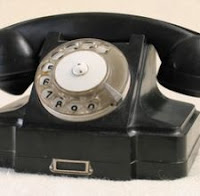He had replaced his sliding glass door with outward opening french doors and in the process the existing door contact was damaged. His alarm is a standard Honeywell hard wired alarm system. He correctly acted to bypass the missing door contact so he could continue to arm the remaining alarm sensors. His alarm company quoted him $165 for the part and to send a technician out to install the replacement. Their reason included the technician 'programming' the new door contact. The customer wanted to know if he could obtain a hard wired door contact and replace the sensor himself. The short answer is probably yes.
 |
| Flush Mount Hard Wired Door Contacts |
Prior to calling me, this customer had correctly surmised that since a hard wired door contact is essentially a type of magnetic switch that reprogramming the alarm would likely not be necessary. He is correct. If you replace an existing door contact with a similar contact normally no further programming is necessary. You must verify that everything functions after replacement and also that you are satisfied with the current zone number and/or description.
 |
| Recessed Hard Wired Door Contacts |
Installation is simply a matter of attaching the new contact to the existing wire and securing it with a low voltage electrical 'B-connector' also called a 'beanie' or 'crimp.' Secure the flush mount door contact and magnet to the door with the supplied screws. At this point you should be able to go to your keypad, remove the bypass from the zone and your new contact should function normally. A simple test is to turn on your door chimes and pull the door open and closed a few times. Each time you should hear the door chime beeping. Next arm your alarm normally, exit, wait a few minutes and re-enter and disarm. If all of these tests are successful, it is most likely that your door contact will continue to function perfectly with your alarm.
This customer had this alarm for several years and his system was no longer covered by a warranty or maintenance plan. If your system is under a warranty or maintenance plan with your alarm manufacturer or monitoring company you should check with them first to ascertain your options. It is entirely possible that a DIY repair may be unnecessary. If you have a maintenance plan to cover this repair-you may only have to pay a small one-time cost. It is also worth noting that a DIY repair could void your existing manufacturers or monitoring company warranty. In all cases you assume liability for any functional changes to your alarm system that you make on your own.










